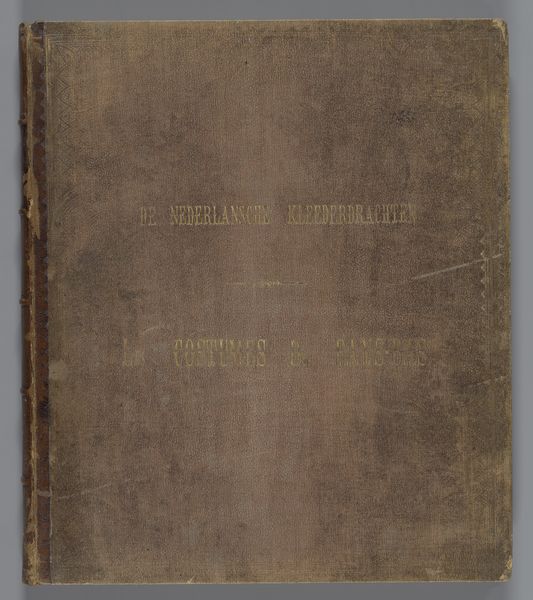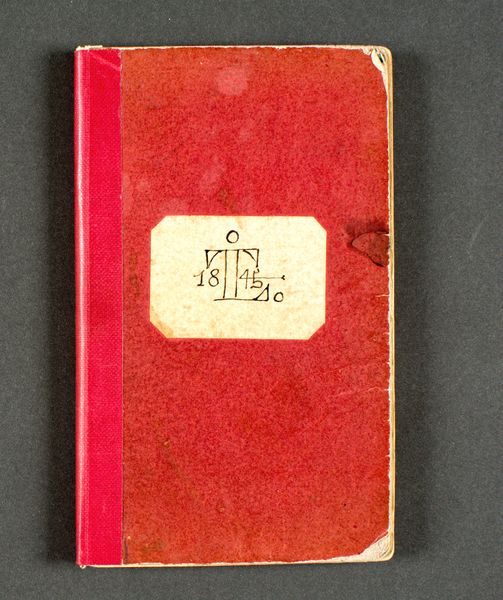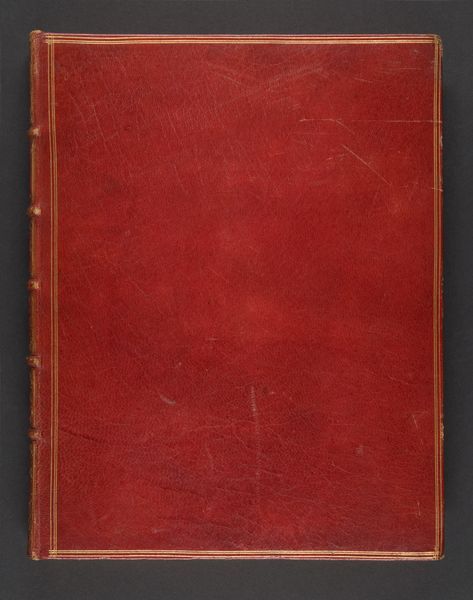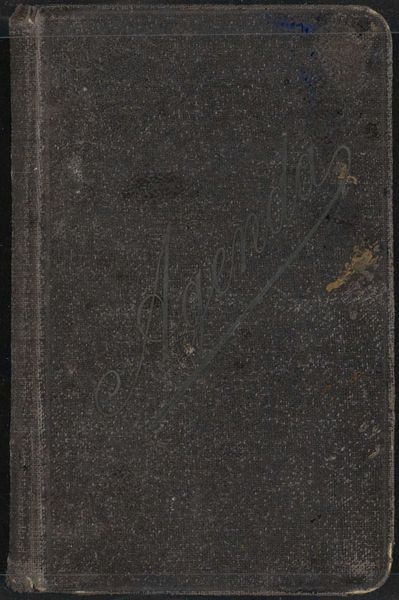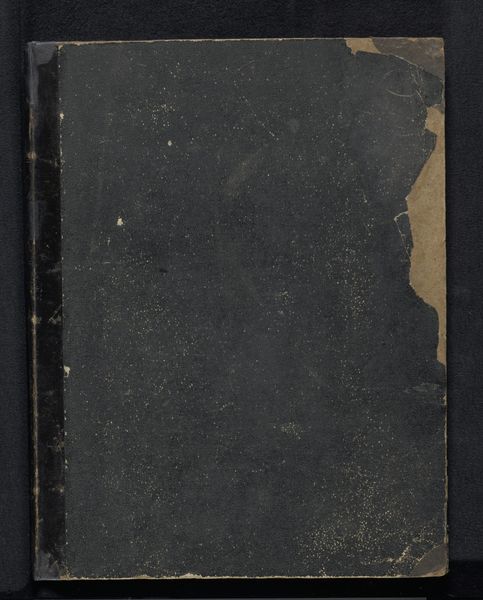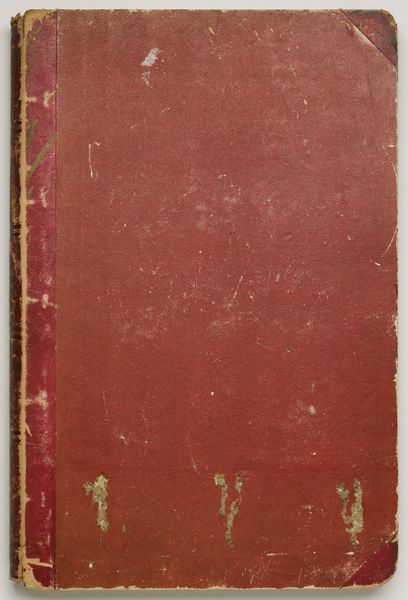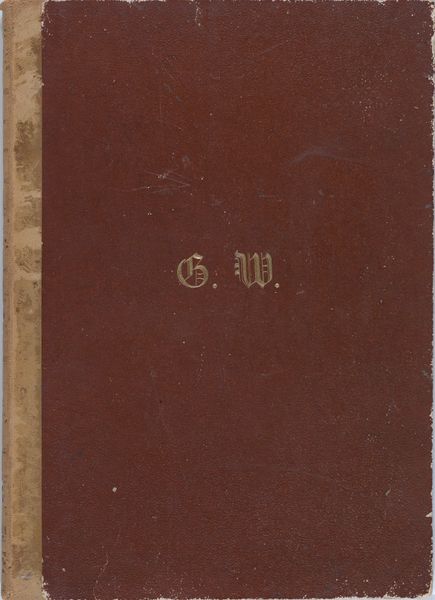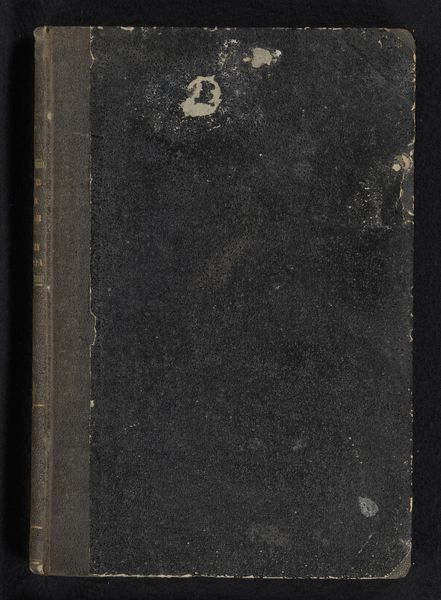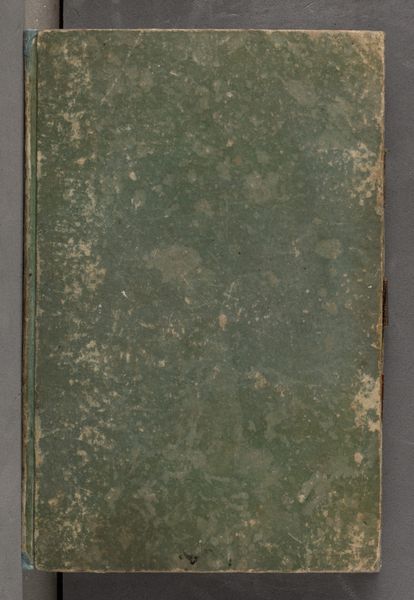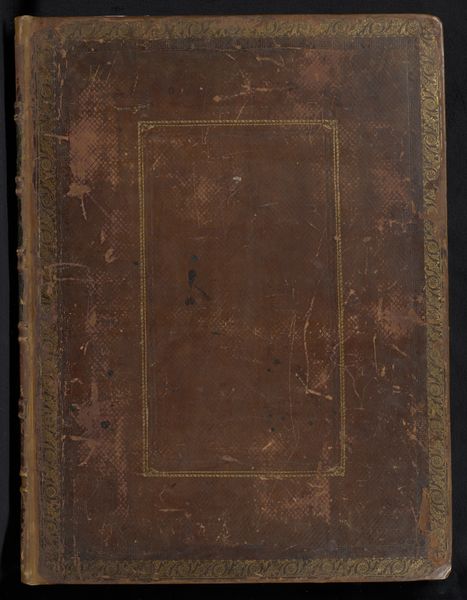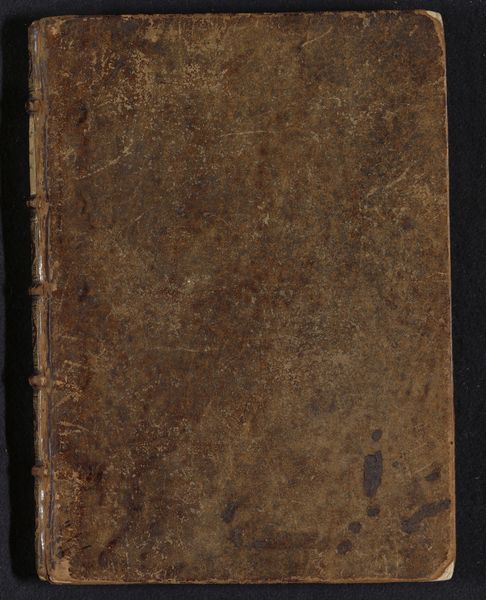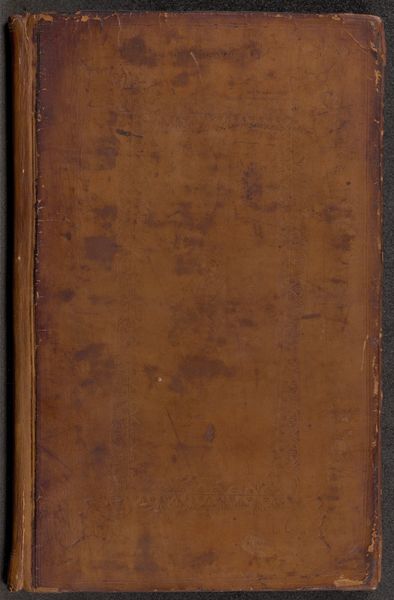
drawing, paper, wood
#
portrait
#
drawing
#
paper
#
romanticism
#
wood
Dimensions: 197 mm (height) x 136 mm (width) (brutto)
Curator: Here we have Johan Thomas Lundbye's "Poesi- og dagbog 1840-44," a drawing on paper, dating from 1840 to 1844, at the SMK - Statens Museum for Kunst. Editor: The worn, aged cover speaks volumes. It's visually tactile—I want to touch it, feel its history, and maybe uncover hidden stories embedded within its texture and deep-red color. Curator: It’s evocative, isn't it? Red traditionally symbolized passion, sacrifice, or even revolution, and I imagine Lundbye filled these pages with his deepest thoughts and artistic aspirations. Editor: Absolutely. Knowing it’s both a poetry book and a diary heightens my awareness. The convergence signifies an intense personal reflection. As an artist deeply enmeshed in the Romantic movement, what statements was Lundbye trying to produce for himself and for the outer world? Curator: Lundbye sought truth and beauty in nature and ordinary life. His works frequently convey longing for the idealized landscapes of the Danish countryside, tinged with nationalism and a sense of place and belonging. Editor: Yes, his desire to ground an identity to these concepts resonates so well! As such, do the entries provide insight into social anxieties that affect not just the artist himself but Denmark as a whole during that period? How does this personal journey intersect with national identity? Curator: It certainly might. This little book embodies not just artistic development but possibly societal concerns and cultural self-examination too, serving as both artistic outlet and historical document. Editor: The visual of this book has opened layers within me that want further exploration, and that kind of invitation from any piece of art holds incredible value. Curator: Agreed; in a way, we've journeyed through time just by looking at this cover. It shows us that there are often many complex connections in an image than meets the eye.
Comments
No comments
Be the first to comment and join the conversation on the ultimate creative platform.
